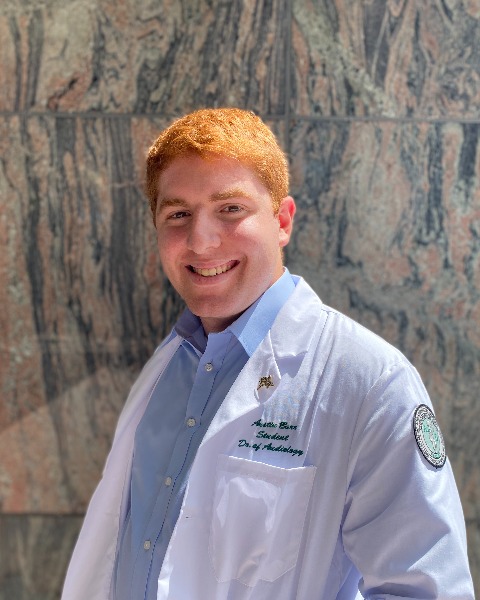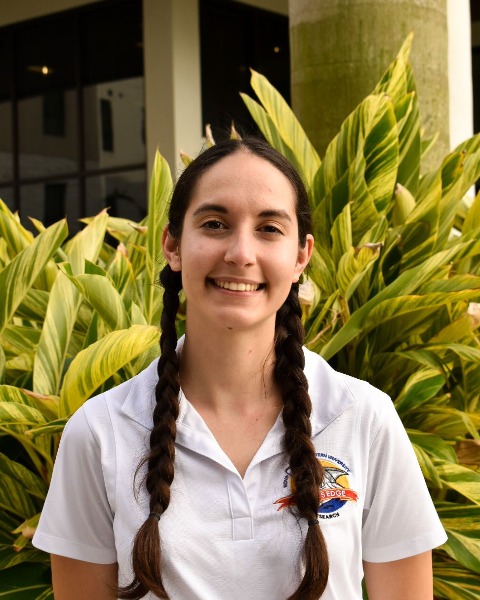Neuro-Audiology (NA)
PP1002 - The Puzzle with Missing Pieces: A Case Study
- MR
Marisol Rodriguez, BS (she/her/hers)
AuD Student
Nova Southeastern UniversityFinancial Disclosures: I do not have any relevant financial relationships with anything to disclose.
Non-Financial Disclosures: I do not have any relevant non-financial relationships with anything to disclose. - BM
Brook E. McGill, BA (she/her/hers)
AuD Student
Nova Southeastern University
Davie, FloridaFinancial Disclosures: I do not have any relevant financial relationships with anything to disclose.
Non-Financial Disclosures: I do not have any relevant non-financial relationships with anything to disclose. 
Austin Barr, BA
AuD Student
Nova Southeastern University
Nova Southeastern University
Davie, FloridaFinancial Disclosures: I do not have any relevant financial relationships with anything to disclose.
Non-Financial Disclosures: I do not have any relevant non-financial relationships with anything to disclose.
Talia Rejes Diaz, AA (she/her/hers)
Undergraduate Research Student
Nova Southeastern University
Nova Southeastern University
Cape Coral, FloridaFinancial Disclosures: I do not have any relevant financial relationships with anything to disclose.
Non-Financial Disclosures: I do not have any relevant non-financial relationships with anything to disclose.- KF
Katharine Fitzharris, AuD, MS, PhD (she/her/hers)
Associate Professor
Nova Southeastern University
Nova Southeastern University
Fort Lauderdale, FloridaFinancial Disclosures: I do not have any relevant financial relationships with anything to disclose.
Non-Financial Disclosures: I serve on several AAA conference committees.
Presenter(s)
Lead Presenter(s)
Auditory Neuropathy Spectrum Disorder (ANSD) causes the transmission of sound signals to not reach the brain and is usually detected more in children. ABRs are used clinically to ensure an intact peripheral and central auditory pathway through the low brainstem and can be used as part of the protocol in diagnosing ANSD. Currently, there is a lack of literature on sudden onset ANSD in adults. The case presented here is from a 45-year-old male who was referred for a central auditory processing evaluation; behavioral and electrophysiological findings will be discussed.
Summary:
Background
The neural integrity of the central auditory nervous system is important for acoustical stimuli from the cochlea to reach the auditory cortex. ABRs are used clinically to ensure an intact peripheral and central auditory pathway through the low brainstem. Anomalous findings in the ABR are often related to peripheral hearing loss, ANSD, space-occupying lesions, and so on. The ABR is a well-used diagnostic tool in an audiologist’s battery, but what happens when the results are unpredictable?
Electrophysiology has been gaining popularity as a part of the CAPD test battery. Though ABRs are rarely abnormal in individuals with CAPD, other anomalies have been noted, especially more recently with cABR and later potentials. One study has documented absent ABR wave Vs in an 18-year-old woman with CAPD and normal peripheral hearing. The following factors were given as possible factors of absent ABR findings for individuals with CAPD; disruption of type I fiber synapses, afferent-efferent disconnection, or brainstem dysfunction, particularly in the presence of hydrocephaly.
Several symptoms of ANSD overlap with CAPD, which may underscore abnormal electrophysiological findings in some individuals. However, a search of the literature did not yield cases of sudden adult-onset ANSD appearing as CAPD. This poster aims to present a case of a 45-year-old gentleman with severe auditory complaints who had behavioral findings consistent with globally disordered auditory processing, an absent ABR, and a normal MLR.
Case
Mr. X’s, a musician by trade, complaints began with the sensation of aural fullness and tinnitus in the Summer of 2021, and he was subsequently diagnosed with an ear infection (treated with antibiotics). In May of 2022, Mr. X was diagnosed with sudden sensorineural hearing loss. Further audiometric testing yielded normal pure tone thresholds but fluctuating word recognition scores in the right ear. He reported having several MRIs which were within normal limits. Mr. X visited an ENT and was prescribed Flavonoids to help reduce his tinnitus severity.
In June of 2022, the patient presented to our clinic with reports of fluctuating hearing loss, aural fullness, and tinnitus. His primary complaint was difficulty understanding speech in background noise.
Audiometric testing indicated essentially normal hearing sensitivity bilaterally. Tympanometry yielded type A tympanograms in both ears; DP and TEOAEs were present. Acoustic reflex testing revealed present ipsilateral reflexes at 2000 Hz and absent ipsilateral and contralateral reflexes at all other frequencies bilaterally.
The auditory processing battery included 500 Hz MLD, dichotic digits, frequency patterns, and the SCAN3-A. Results were only normal for the humming portion of the frequency pattern test.
Electrophysiological testing was completed at a second appointment. Neurodiagnostic ABR testing revealed no clear waves. 500 Hz MLR was within normal limits for each ear.
These findings could be consistent with ANSD. Mr. X was referred back to the referring ENT with a recommendation to follow-up with a neurotologist. Efforts to follow up on his case are ongoing.
Learning Objectives:
- describe electrophysiological and behavioral CAPD findings of an adult with potential ANSD
